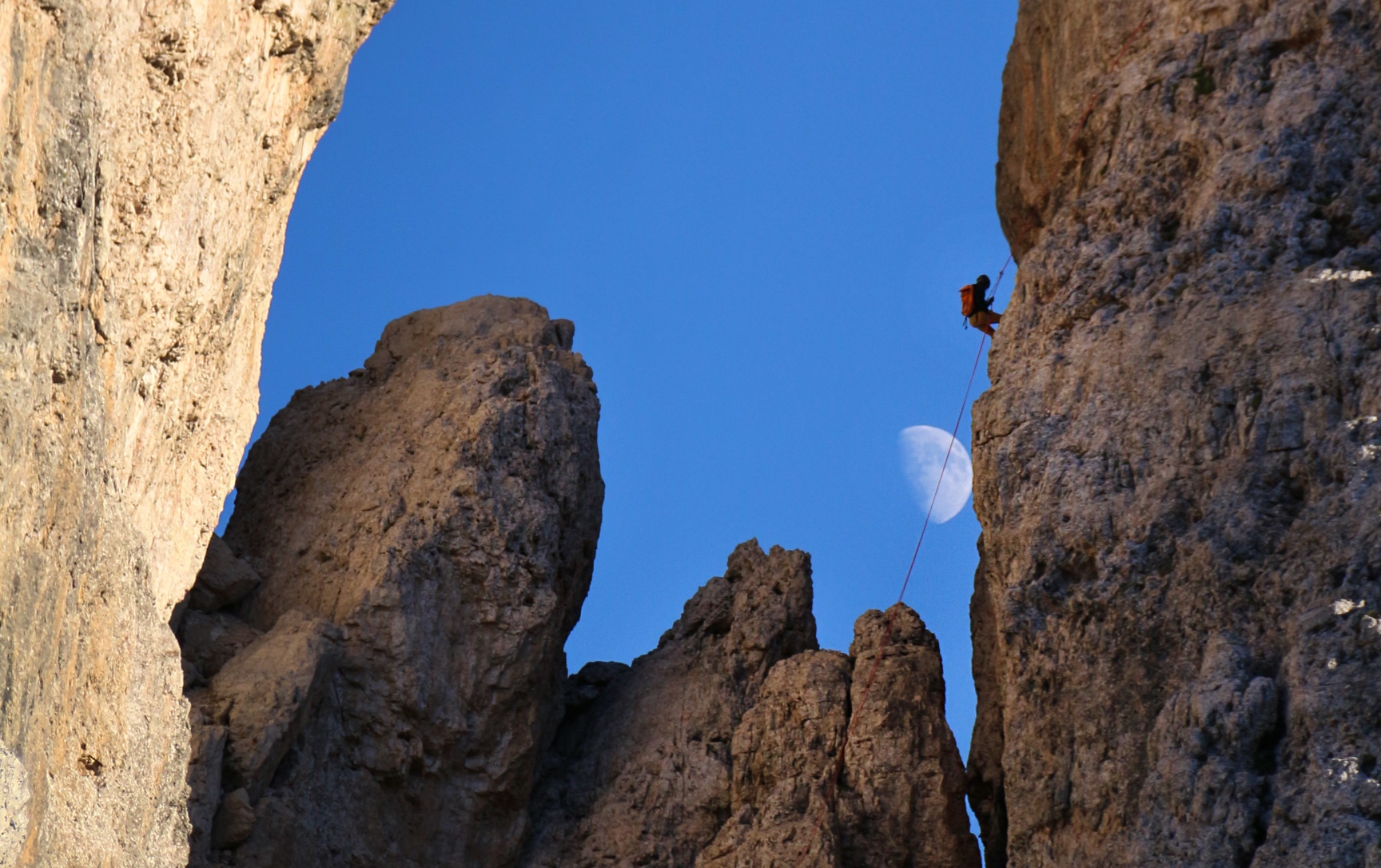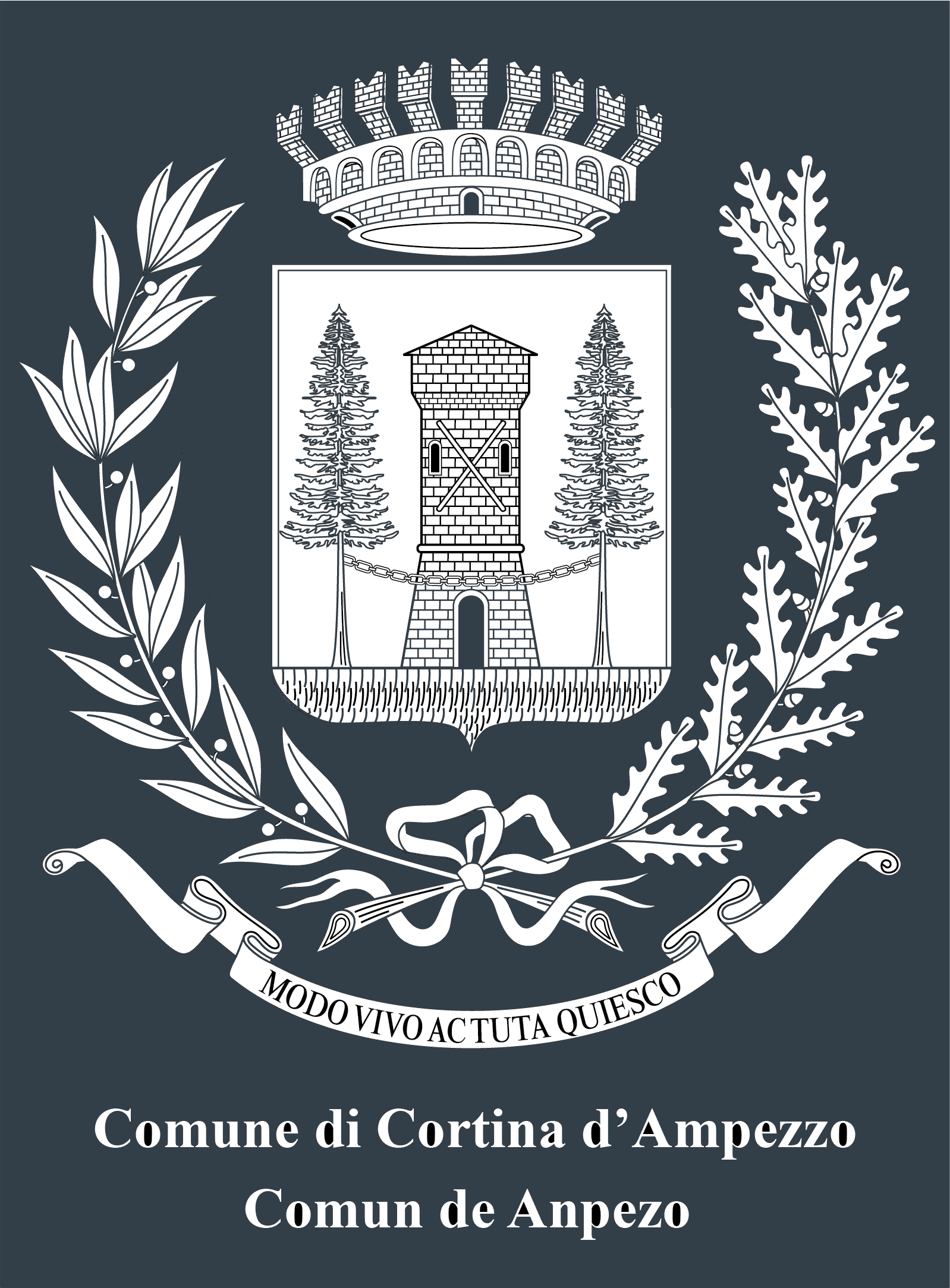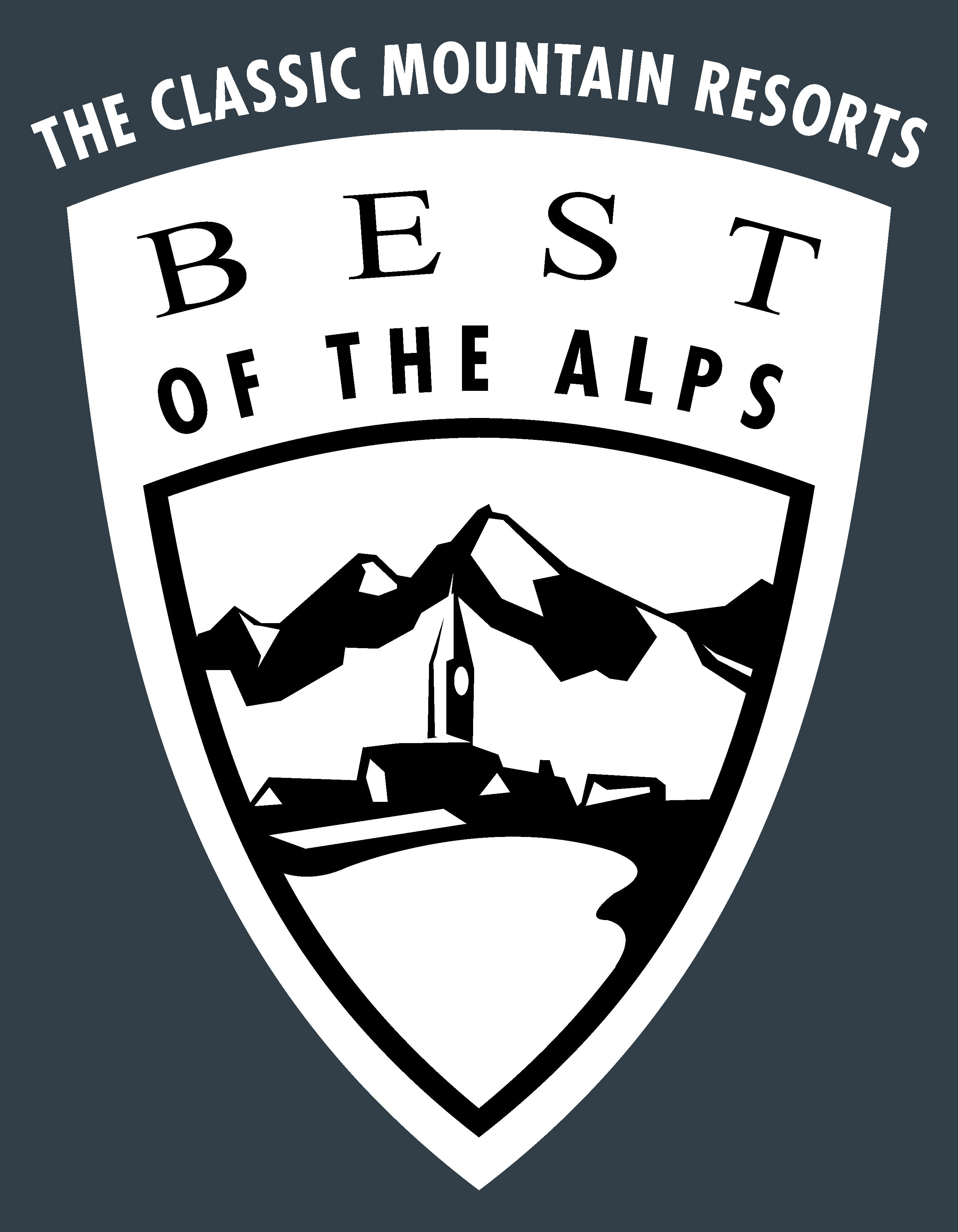
Rifugio Cinque Torri, Rifugio Scoiattoli
Cinque Torri is without a doubt the best known and historically most important climbing area in Cortina. It was here that the first members of the Gruppo Scoiattoli di Cortina went to train. Their visit therefore dates back as far as 1939, the year the group was founded. Sport climbing, in fact, began in the 1970s, later than alpinism. The climbing walls, often hidden by the forest and characterised by modest heights, did not attract the first generation of mountaineers as much as the conquest of the highest peaks in the area. The towers are situated between 2,200 and 2,360 metres above sea level, at the base of the Averau and Nuvolau mountains, in a dominant position, clearly visible from the Ampezzo basin. The type of rock that characterises them is called Dolomia Principale. The rock is often square and sharp, with almost step-like ledges and roofs, due to its unique stratification. The rock is also characterised by its exposure, which varies greatly: to the south it is mostly yellow and overhanging, with square blocks, while to the north it is more grey with shapes such as holes and hourglasses due to water erosion. The rock faces are oriented with different exposures, which means that it is possible to climb them nearly all year round. north-oriented rock faces can mostly be climbed only during the summer months, while south-oriented rock faces are perfect for climbing during fine winter days. The Cinque Torri offer more than 200 equipped pitches of varying difficulty, between 3 and 8b, as well as various classic and modern routes (mainly located on the Torre Grande). Not all classic routes are bolted: mountaineering equipment is therefore required. The main rock faces of the Cinque Torri are: The Torre Grande, the main tower and the southernmost one. The base divides, from mid-height, into three distinct peaks: South summit, North summit and West summit. The south face is the richest in routes and the most visited. Undoubtedly worth mentioning is the Myriam route, a beautiful classic route among the best known and most popular in the Ampezzo basin. The second tower is fractured into three distinct peaks: Torre Lusy, Torre del Barancio and Torre Romana. These towers are particularly popular on the north face where many classic routes are found. The Torre Latina, the third tower, is split obliquely into two blocks. The fourth tower is divided into the Quarta Alta (Upper Fourth) and Quarta Bassa (Lower Fourth). Next to these two towers is the Torre di Mezzo. The fifth and northernmost tower is the Torre Inglese, divided into two spires. Approach: from Cortina, take the state road towards Passo Falzarego and follow the steep asphalted road to Rifugio Cinque Torri. In high season it is closed to traffic, but you can use the shuttle service or walk along it in about an hour. Alternatively, park at the Bai de Dones car park and take the chairlift up to the Rifugio Scoiattoli, from where the walls can be reached in a few minutes.
As the Cinque Torri are very popular, it is important to be aware of falling stones at the base of the walls. We therefore recommend wearing a helmet and taking care not to cause stones to fall out of respect for other climbers and hikers."

Rifugio Cinque Torri, Rifugio Scoiattoli
Cinque Torri is without a doubt the best known and historically most important climbing area in Cortina. It was here that the first members of the Gruppo Scoiattoli di Cortina went to train. Their visit therefore dates back as far as 1939, the year the group was founded. Sport climbing, in fact, began in the 1970s, later than alpinism. The climbing walls, often hidden by the forest and characterised by modest heights, did not attract the first generation of mountaineers as much as the conquest of the highest peaks in the area. The towers are situated between 2,200 and 2,360 metres above sea level, at the base of the Averau and Nuvolau mountains, in a dominant position, clearly visible from the Ampezzo basin. The type of rock that characterises them is called Dolomia Principale. The rock is often square and sharp, with almost step-like ledges and roofs, due to its unique stratification. The rock is also characterised by its exposure, which varies greatly: to the south it is mostly yellow and overhanging, with square blocks, while to the north it is more grey with shapes such as holes and hourglasses due to water erosion. The rock faces are oriented with different exposures, which means that it is possible to climb them nearly all year round. north-oriented rock faces can mostly be climbed only during the summer months, while south-oriented rock faces are perfect for climbing during fine winter days. The Cinque Torri offer more than 200 equipped pitches of varying difficulty, between 3 and 8b, as well as various classic and modern routes (mainly located on the Torre Grande). Not all classic routes are bolted: mountaineering equipment is therefore required. The main rock faces of the Cinque Torri are: The Torre Grande, the main tower and the southernmost one. The base divides, from mid-height, into three distinct peaks: South summit, North summit and West summit. The south face is the richest in routes and the most visited. Undoubtedly worth mentioning is the Myriam route, a beautiful classic route among the best known and most popular in the Ampezzo basin. The second tower is fractured into three distinct peaks: Torre Lusy, Torre del Barancio and Torre Romana. These towers are particularly popular on the north face where many classic routes are found. The Torre Latina, the third tower, is split obliquely into two blocks. The fourth tower is divided into the Quarta Alta (Upper Fourth) and Quarta Bassa (Lower Fourth). Next to these two towers is the Torre di Mezzo. The fifth and northernmost tower is the Torre Inglese, divided into two spires. Approach: from Cortina, take the state road towards Passo Falzarego and follow the steep asphalted road to Rifugio Cinque Torri. In high season it is closed to traffic, but you can use the shuttle service or walk along it in about an hour. Alternatively, park at the Bai de Dones car park and take the chairlift up to the Rifugio Scoiattoli, from where the walls can be reached in a few minutes.
As the Cinque Torri are very popular, it is important to be aware of falling stones at the base of the walls. We therefore recommend wearing a helmet and taking care not to cause stones to fall out of respect for other climbers and hikers."

Rifugio Cinque Torri, Rifugio Scoiattoli
Cinque Torri is without a doubt the best known and historically most important climbing area in Cortina. It was here that the first members of the Gruppo Scoiattoli di Cortina went to train. Their visit therefore dates back as far as 1939, the year the group was founded. Sport climbing, in fact, began in the 1970s, later than alpinism. The climbing walls, often hidden by the forest and characterised by modest heights, did not attract the first generation of mountaineers as much as the conquest of the highest peaks in the area. The towers are situated between 2,200 and 2,360 metres above sea level, at the base of the Averau and Nuvolau mountains, in a dominant position, clearly visible from the Ampezzo basin. The type of rock that characterises them is called Dolomia Principale. The rock is often square and sharp, with almost step-like ledges and roofs, due to its unique stratification. The rock is also characterised by its exposure, which varies greatly: to the south it is mostly yellow and overhanging, with square blocks, while to the north it is more grey with shapes such as holes and hourglasses due to water erosion. The rock faces are oriented with different exposures, which means that it is possible to climb them nearly all year round. north-oriented rock faces can mostly be climbed only during the summer months, while south-oriented rock faces are perfect for climbing during fine winter days. The Cinque Torri offer more than 200 equipped pitches of varying difficulty, between 3 and 8b, as well as various classic and modern routes (mainly located on the Torre Grande). Not all classic routes are bolted: mountaineering equipment is therefore required. The main rock faces of the Cinque Torri are: The Torre Grande, the main tower and the southernmost one. The base divides, from mid-height, into three distinct peaks: South summit, North summit and West summit. The south face is the richest in routes and the most visited. Undoubtedly worth mentioning is the Myriam route, a beautiful classic route among the best known and most popular in the Ampezzo basin. The second tower is fractured into three distinct peaks: Torre Lusy, Torre del Barancio and Torre Romana. These towers are particularly popular on the north face where many classic routes are found. The Torre Latina, the third tower, is split obliquely into two blocks. The fourth tower is divided into the Quarta Alta (Upper Fourth) and Quarta Bassa (Lower Fourth). Next to these two towers is the Torre di Mezzo. The fifth and northernmost tower is the Torre Inglese, divided into two spires. Approach: from Cortina, take the state road towards Passo Falzarego and follow the steep asphalted road to Rifugio Cinque Torri. In high season it is closed to traffic, but you can use the shuttle service or walk along it in about an hour. Alternatively, park at the Bai de Dones car park and take the chairlift up to the Rifugio Scoiattoli, from where the walls can be reached in a few minutes.
As the Cinque Torri are very popular, it is important to be aware of falling stones at the base of the walls. We therefore recommend wearing a helmet and taking care not to cause stones to fall out of respect for other climbers and hikers."

Rifugio Cinque Torri, Rifugio Scoiattoli
Cinque Torri is without a doubt the best known and historically most important climbing area in Cortina. It was here that the first members of the Gruppo Scoiattoli di Cortina went to train. Their visit therefore dates back as far as 1939, the year the group was founded. Sport climbing, in fact, began in the 1970s, later than alpinism. The climbing walls, often hidden by the forest and characterised by modest heights, did not attract the first generation of mountaineers as much as the conquest of the highest peaks in the area. The towers are situated between 2,200 and 2,360 metres above sea level, at the base of the Averau and Nuvolau mountains, in a dominant position, clearly visible from the Ampezzo basin. The type of rock that characterises them is called Dolomia Principale. The rock is often square and sharp, with almost step-like ledges and roofs, due to its unique stratification. The rock is also characterised by its exposure, which varies greatly: to the south it is mostly yellow and overhanging, with square blocks, while to the north it is more grey with shapes such as holes and hourglasses due to water erosion. The rock faces are oriented with different exposures, which means that it is possible to climb them nearly all year round. north-oriented rock faces can mostly be climbed only during the summer months, while south-oriented rock faces are perfect for climbing during fine winter days. The Cinque Torri offer more than 200 equipped pitches of varying difficulty, between 3 and 8b, as well as various classic and modern routes (mainly located on the Torre Grande). Not all classic routes are bolted: mountaineering equipment is therefore required. The main rock faces of the Cinque Torri are: The Torre Grande, the main tower and the southernmost one. The base divides, from mid-height, into three distinct peaks: South summit, North summit and West summit. The south face is the richest in routes and the most visited. Undoubtedly worth mentioning is the Myriam route, a beautiful classic route among the best known and most popular in the Ampezzo basin. The second tower is fractured into three distinct peaks: Torre Lusy, Torre del Barancio and Torre Romana. These towers are particularly popular on the north face where many classic routes are found. The Torre Latina, the third tower, is split obliquely into two blocks. The fourth tower is divided into the Quarta Alta (Upper Fourth) and Quarta Bassa (Lower Fourth). Next to these two towers is the Torre di Mezzo. The fifth and northernmost tower is the Torre Inglese, divided into two spires. Approach: from Cortina, take the state road towards Passo Falzarego and follow the steep asphalted road to Rifugio Cinque Torri. In high season it is closed to traffic, but you can use the shuttle service or walk along it in about an hour. Alternatively, park at the Bai de Dones car park and take the chairlift up to the Rifugio Scoiattoli, from where the walls can be reached in a few minutes.
As the Cinque Torri are very popular, it is important to be aware of falling stones at the base of the walls. We therefore recommend wearing a helmet and taking care not to cause stones to fall out of respect for other climbers and hikers."

Rifugio Cinque Torri, Rifugio Scoiattoli
Cinque Torri is without a doubt the best known and historically most important climbing area in Cortina. It was here that the first members of the Gruppo Scoiattoli di Cortina went to train. Their visit therefore dates back as far as 1939, the year the group was founded. Sport climbing, in fact, began in the 1970s, later than alpinism. The climbing walls, often hidden by the forest and characterised by modest heights, did not attract the first generation of mountaineers as much as the conquest of the highest peaks in the area. The towers are situated between 2,200 and 2,360 metres above sea level, at the base of the Averau and Nuvolau mountains, in a dominant position, clearly visible from the Ampezzo basin. The type of rock that characterises them is called Dolomia Principale. The rock is often square and sharp, with almost step-like ledges and roofs, due to its unique stratification. The rock is also characterised by its exposure, which varies greatly: to the south it is mostly yellow and overhanging, with square blocks, while to the north it is more grey with shapes such as holes and hourglasses due to water erosion. The rock faces are oriented with different exposures, which means that it is possible to climb them nearly all year round. north-oriented rock faces can mostly be climbed only during the summer months, while south-oriented rock faces are perfect for climbing during fine winter days. The Cinque Torri offer more than 200 equipped pitches of varying difficulty, between 3 and 8b, as well as various classic and modern routes (mainly located on the Torre Grande). Not all classic routes are bolted: mountaineering equipment is therefore required. The main rock faces of the Cinque Torri are: The Torre Grande, the main tower and the southernmost one. The base divides, from mid-height, into three distinct peaks: South summit, North summit and West summit. The south face is the richest in routes and the most visited. Undoubtedly worth mentioning is the Myriam route, a beautiful classic route among the best known and most popular in the Ampezzo basin. The second tower is fractured into three distinct peaks: Torre Lusy, Torre del Barancio and Torre Romana. These towers are particularly popular on the north face where many classic routes are found. The Torre Latina, the third tower, is split obliquely into two blocks. The fourth tower is divided into the Quarta Alta (Upper Fourth) and Quarta Bassa (Lower Fourth). Next to these two towers is the Torre di Mezzo. The fifth and northernmost tower is the Torre Inglese, divided into two spires. Approach: from Cortina, take the state road towards Passo Falzarego and follow the steep asphalted road to Rifugio Cinque Torri. In high season it is closed to traffic, but you can use the shuttle service or walk along it in about an hour. Alternatively, park at the Bai de Dones car park and take the chairlift up to the Rifugio Scoiattoli, from where the walls can be reached in a few minutes.
As the Cinque Torri are very popular, it is important to be aware of falling stones at the base of the walls. We therefore recommend wearing a helmet and taking care not to cause stones to fall out of respect for other climbers and hikers."




Head Office: Loc. Sacus 4, 32043 Cortina d’Ampezzo (BL) – P.I. 00806650255 | Privacy Policy – Cookie Policy
A partire da giovedì 4 dicembre, ogni famiglia residente a Cortina potrà ritirare gratuitamente la bandiera con il nuovo emblema presso lo IAT di Piazza Roma.
Vivi la storia — sogna Milano‑Cortina.